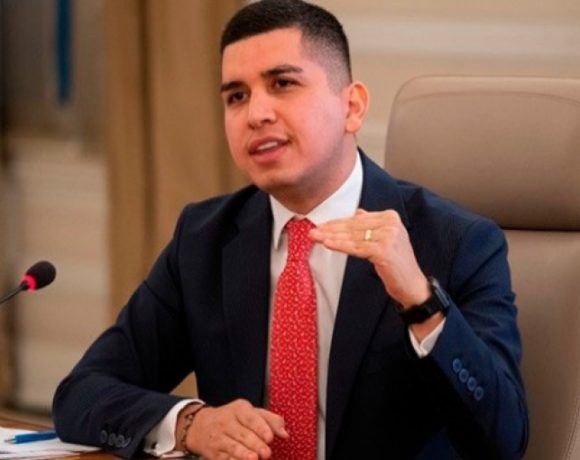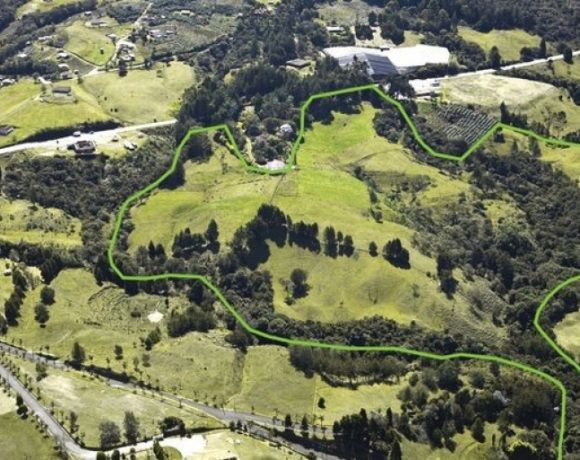Colombia Supreme Court Ruling: Fiduciaries Hardly Protect Real-Estate Investors

The Supreme Court of Colombia on January 17 notified a group of investors suing a fiduciary over a failed medical-office-building project near Medellin that a fiduciary has extremely limited legal obligations to oversee performance of shaky real-estate development projects or verify crucial financial assertions made by the developer.
The group of investors had sued Colombian fiduciary Corficolombiana (a subsidiary of banking giant Grupo Aval) arguing that project developer Arcor Inmobiliaria SA had failed to achieve the mandatory 50% “equilibrium point” of funding from project investors — as required by the contract — before receiving the investor funds from Corficolombiana.
(Editor’s full disclosure: Medellin Herald obtained a copy of the Court ruling directly from the lawyer who represented the plaintiffs, among which included myself and my wife).
Arcor asserted that it had accumulated COP$4.57 billion (US$1.6 million) in investor deposits for the project — supposedly exceeding the Arcor-calculated 50% “equilibrium point” that triggered disbursement of investor funds from Corficolombiana to Arcor.
However, Arcor’s claim that it had supposedly reached the 50% “equilibrium point” lacked a required signed statement from the official financial auditor, the Supreme Court ruling noted.
Nevertheless, the Supreme Court ruled that the lack of this signed document was “insufficient to demonstrate the non-compliance of the fiduciary.”
The only actual work Arcor performed at the site was demolition of an old building, digging a hole for the proposed basement parking lot and erecting a handful of pillars. No new building was ever constructed, leaving the investors with a loss that collectively exceeds US$2 million.
Following Arcor’s abandonment of the project, a Circuit Court in Cali (where Corficolombiana is headquartered) confirmed its liquidation. Years later, the lot upon which the building was to be erected was resold to a third party, the funds from which enabled the project investors to recoup about half their original investments.
A hard lesson for investors in Colombian development projects (“sobre planos”) supposedly guaranteed by fiduciaries: Don’t assume that fiduciaries are actually checking the performance of construction contractors or that they truly know whether the “equilibrium point” has in reality been reached. Under the Supreme Court ruling, fiduciaries can just take the word of contractors about contract compliance, no matter how phony or flimsy those claims may be.
For example: Arcor provided documents — obtained by the suing investors — claiming to show that it had bought numerous plumbing fixtures for the office building. But these fixtures never showed up at the site — and neither the fiduciary nor the contractor ever explained to investors what happened to these materials.
Investors also had been led to believe that the 50% “equilibrium point” supposedly pertained to funds obtained for the actual proposed office building, not later add-ons. Yet Arcor had included in the “equilibrium point” funds it supposedly obtained from the sale of additional mini-booths (“burbujas”) – which in any case were never built.
So, a first warning: naive investors shouldn’t assume that having a fiduciary involved in a new-build project in Colombia somehow provides guarantees protecting investors against contractor non-compliance or fraud.
Second warning: Investors also should note that Corficolombiana has been tied to several other, high-profile construction scandals in Colombia.
One example: Corficolombiana’s ex-president José Elías Melo is now facing criminal charges in the massive Odebrecht bribery scandal involving highway construction projects in Colombia.
Melo – who has denied the charges – is alleged to have known about bribes totaling US$6.5 million that Odebrecht officials admit they paid to high government officials in order to obtain contracts for the giant “Ruta del Sol” phase-two highway project, according to the Colombian attorney general.
Another example: More recently, 132 national and international investors in the unfinished, abandoned, multi-million-dollar “Meritage” condominium and commercial-center project adjacent to the “variante al aeropuerto” highway between Medellin and the international airport at Rionegro have been victimized by another scandal involving Corficolombiana.
In total, the Meritage investors had paid more than COP$47 billion (US$16.6 million) for future apartments and commercial spaces in a project snarled by criminal charges involving alleged narcotraffickers.
A lawyer representing investors filing suit to recover their funds claims that the investors have been “abandoned” by project fiduciary Corficolombiana as well as the Colombian attorney general, who moved to halt and seize the project.
According to the lawyer, the attorney general supposedly should have warned investors about investing in a site whose legal ownership is entangled in a dispute between alleged drug-mafia kingpins.
In an October 7, 2017 report about the Meritage scandal by Colombian daily newspaper El Tiempo, foreign investor Paul Torres was quoted as saying that “Colombia doesn’t offer any guarantees to foreign investors.”
Similarly, a June 15, 2017 report from Medellin-based newspaper El Colombiano had this to say about the Meritage scandal: “In this country, it’s no longer enough to study the history of property titles, according to the Civil Code, but rather one must search until infinity to discover possible crimes of previous [property] owners. A very grave issue for legal security.”
















